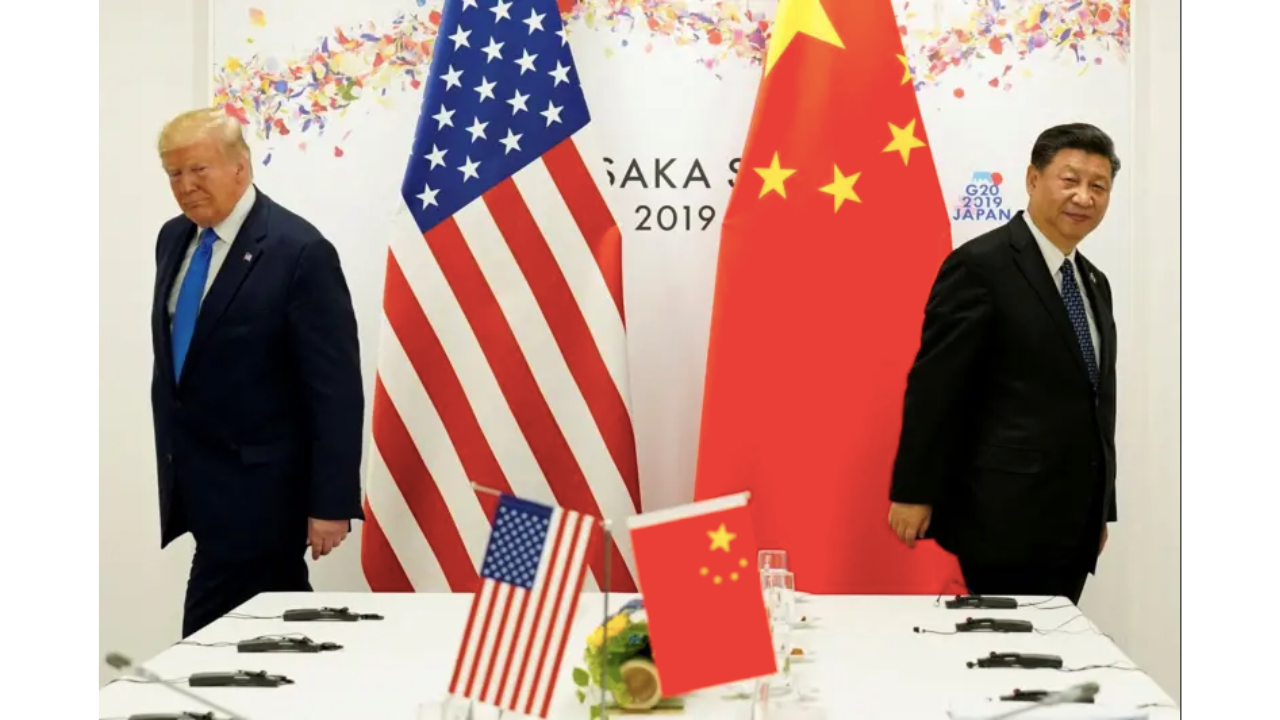
Published 02/01/2025 17:38 | Edited 02/01/2025 18:15
In 2024, the United States’ participation in trade with China reached the lowest level since Beijing joined the World Trade Organization (WTO) in 2001. From January to November, trade between the two powers represented just 11.2 % of total Chinese imports and exports, a reduction of 4.6 percentage points compared to that year.
The drop reflects structural changes in the economic and trade policies of both countries, worsened by geopolitical tensions and the prospect of new trade tariffs under the possible leadership of Donald Trump, who could assume his second term in January 2025.
Reduced dependency and internal empowerment

In an interview with Red PortalElias Jabbour, economist and expert on the Chinese economy, points out that the reduction of Chinese dependence on the United States is the result of a long-term strategic effort. “Strengthening the domestic market and reducing the need to import high-technology products from the USA are fundamental for China. It is a reflection of industrial policies that reduce technological dependence and position the country for more sustainable growth”, he explained.
Jabbour highlighted that this movement reflects a strategic effort to reduce dependence, especially on highly technologically sophisticated products. “Reducing dependence on the American market is fundamental for China. On the one hand, there is the strengthening of the internal market, and, on the other, the loss of dependence on technological imports. This is the result of growing industrial policies to reduce technological dependence on the US,” said Jabbour.
In the first 11 months of 2024, 14.6% of Chinese exports went to the US, the lowest level since 2001, while imports fell to 6.3%, marking a 4.4 percentage point reduction from the historic peak.
For Elias Jabbour, China is capitalizing on its ability to implement robust industrial policies and strengthen the internal market. He notes that despite the reduction in bilateral trade, the United States continues to face high trade deficits with China. “The one who is winning in this story is China, which is becoming less dependent on American high-technology imports. This is a strategy that brings solid results in the long term”, stated the economist.
Diversification of commercial partners
China has redirected its exports to emerging markets, particularly Southeast Asia. Between January and November, exports to members of the Association of Southeast Asian Nations (ASEAN) exceeded US$520 billion, representing 16% of the total, surpassing the USA as the main destination. Cambodia and Vietnam have seen increases of almost 20% in their imports of Chinese goods.
On the import side, Brazil consolidated itself as the main supplier of soybeans to China, accounting for around 70% of the total between January and November, while the US share fell to 20%, compared to 30% in 2017. The diversification of suppliers, which includes Australia, Canada and France, is also reflected in other products, such as wheat, whose dependence on the US has fallen from almost 40% to less than 20%.
Trade tensions and Trump’s return
The history of tariffs imposed by the US, especially during Trump’s first term, has led China to prepare for new protectionist measures. Beijing already faces the prospect of an additional 10% tariff on almost all Chinese products if the Republican reassumes the presidency.
The Japan Center for Economic Research estimates that higher tariffs, such as those proposed by Trump in 2019 (up to 60%), could reduce Chinese economic growth from 4.7% to 3.4% in 2025, even considering retaliatory measures.
Despite this, President Xi Jinping downplayed the possible impacts in his annual New Year’s speech, stating that the Chinese economy is resilient in the face of challenges. “We always grow stronger through trials and thrive through testing. We must remain confident,” Xi declared, reaffirming the annual GDP growth target of 5%.
Read also: Xi Jinping on 2024: “we grew up in the storm”
Global impacts and perspectives
The weakening of trade relations between the US and China also affects other regions. Chinese exporters have used third countries to dodge tariffs, while Asian and Latin American markets face the effects of “export deflation”, with surplus Chinese products being sold at low prices.
Analysts point out that the trend could be reversed if Trump opts for a trade agreement. According to Naoki Tsukioka, from Mizuho Research & Technologies, “China could promise to import more from the US to avoid or reduce tariffs”.
With both countries increasingly inclined to compete rather than cooperate, the reduction in mutual dependence marks a new phase in global economic relations, with significant implications for emerging markets and the balance of power on the international stage.
Source: vermelho.org.br

